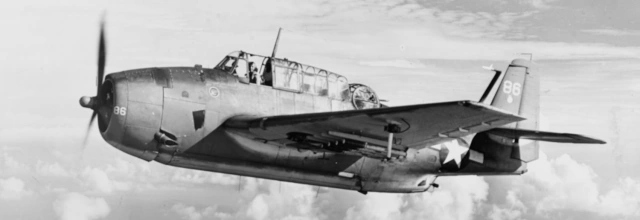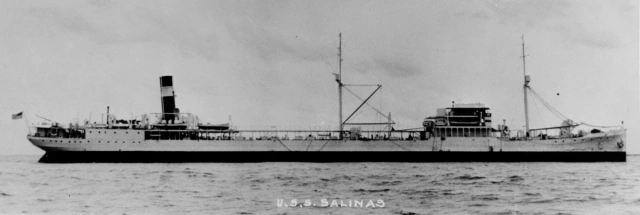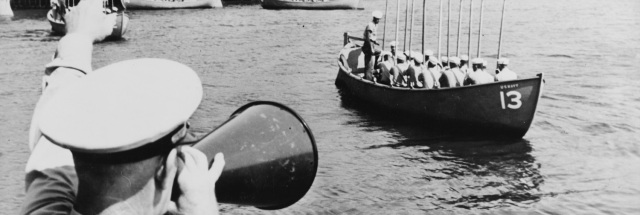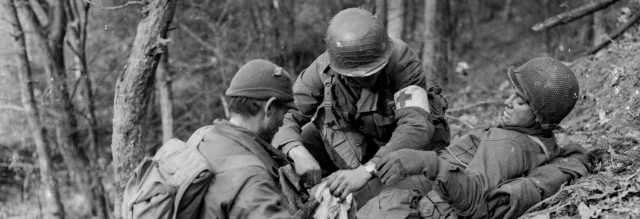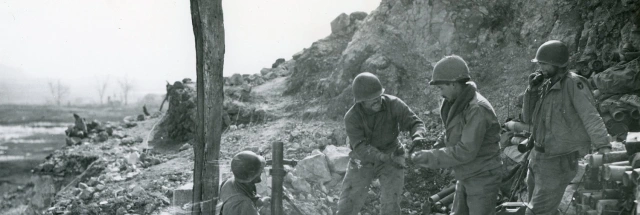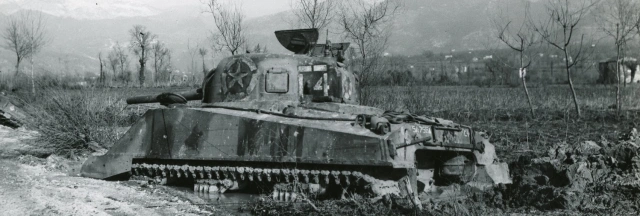| Hometown | Civilian Occupation |
| Middletown, Delaware | Grocery store clerk/manager |
| Branch | Service Number |
| U.S. Navy | 2433653 |
| Theater | Vessel |
| Mediterranean | U.S.S. Leedstown (AP-73) |
| Awards | Campaigns/Battles |
| Purple Heart | Operation Torch |
Early Life & Family
Herbert Hastings Dugan was born in Kirkwood, Delaware, on March 25, 1911. He was the youngest child of William Thomas Dugan (1871–1947) and Mary Ann Dugan (née Mary Ann Burris, 1878–1966). Census records indicate his father held many jobs through the years, including butcher shop manager, farm overseer, and truck driver for a bakery. Dugan had an older brother and three older sisters.
The Dugan family was recorded on the census on January 28, 1920, living in Representative District 13 in or near Middletown, Delaware. Dugan was mentioned as living in Middletown as of May 1, 1922, when he correctly answered a baseball question asked by Every Evening. On December 1, 1922, Dugan’s parents purchased a property now known as 139 East Main Street in Middletown.
According to his personnel file, Dugan dropped out of Middletown High School in 1927 after completing either the 9th grade or 10th grade. (He listed different grades in his two enlistment applications.) In May 1927, he was hired as a clerk by the A&P grocery store on Main Street in Middletown. He worked there until he joined the military. He was Protestant according to his personnel file.
Prewar Naval Career & Marriage
Dugan was living with his parents in Middletown when he volunteered for the U.S. Navy. He gave his reason as a desire to learn a trade when he enlisted for a four-year term of service at the Navy Recruiting Station, Philadelphia, Pennsylvania, on September 5, 1929. Since he was under 21—the age of majority at the time—his father had to consent to his enlistment. At the time, Dugan was described as standing five feet, 5¾ inches tall and weighing 150 lbs., with light brown hair and brown eyes.
On September 7, 1929, Apprentice Seaman Dugan reported for duty at the Naval Training Station, Hampton Roads, Virginia. He completed boot camp on December 16, 1929. Early the next year, on January 7, 1930, Apprentice Seaman Dugan was transferred to the battleship U.S.S. Wyoming (BB-32) for further assignment. Dugan reported for duty aboard the Omaha-class light cruiser U.S.S. Concord (CL-10) on January 14, 1930. She would be his home for the rest of his first enlistment. Two days later, he was promoted to fireman 3rd class. Although Concord’s boilers were fired by oil rather than the coal used by older vessels, service in her engine and boiler rooms was still backbreaking work.

On October 28, 1930, Dugan completed the Bureau of Navigation (BuNav) educational course in the operation of oil burning boilers. The following spring, on April 29, 1931, he finished the BuNav education course qualifying him for the rating of fireman 2nd class and he was duly promoted on November 1, 1932. On December 20, 1932, at the Puget Sound Navy Yard, Washington, Dugan agreed to a two-year extension to his enlistment. As of September 4, 1933, when his first enlistment would otherwise have been completed, his service record noted that Fireman 2nd Class Dugan was with the Concord at Long Beach, California.
Although a sailor’s lot entailed separation from loved ones much of the year, Dugan did manage to take leave for Christmas each year from 1930 to 1933 and for Thanksgiving 1934.
On September 20, 1933, Dugan married Lala Wilhilemina Groeschell (1913–1991) in Ellensburg, Washington. His bride had been born to American parents in Edmonton, Alberta, Canada, but moved to the state of Washington as a child.
Dugan was promoted to fireman 1st class on February 10, 1934. On February 6, 1935, he was hospitalized at the U.S. Naval Hospital, San Diego, California. As a result, he missed perhaps the most notable event of Concord’s interwar career, the rescue of survivors from the crashed airship U.S.S. Macon (ZRS-5) off Big Sur on February 12, 1935. Dugan returned to duty aboard the Concord on March 1, 1935. He became a petty officer on May 3, 1935, when he was promoted to water tender 2nd class. Concord earned the coveted Engineering White “E” for efficiency during the fiscal year 1935.

Water Tender 2nd Class Dugan was honorably discharged at San Pedro, California, on August 30, 1935, after five years, 11 months, and 26 days in the Navy.
Life in Washington State and World War II
In 1936, Lala Dugan gave birth to twins in South Cle Elum, Washington: Gloria Mae Dugan (1936–2015) and Glenda Fae Dugan (1936–2022). About two years later, the Dugans welcomed a third daughter, Patti Ann Dugan (1938–2021), in South Cle Elum.
The Dugan family was recorded on the census on April 5, 1940, living at 712 South 14th Avenue in Yakima, Washington. Dugan was described as the manager of a retail grocery store, presumably Safeway, his employer when he registered for the draft on October 16, 1940. According to a document that Dugan submitted to the Navy in 1942, the family moved to Seattle soon after. They lived for three months at 4732 California Avenue and then moved to 609½ Eastlake Avenue.
A few months after the attack on Pearl Harbor, Dugan volunteered again for the U.S. Navy. He had to obtain a waiver due to having dentures. On April 10, 1942, Chief of the Bureau of Navigation Randall Jacobs (1885–1967) authorized Dugan’s enlistment at his old rating, water tender 2nd class. Dugan apparently had just started a job as a tool room clerk at the Boeing factory one week earlier when he reapplied on April 17, 1942.
Water Tender 2nd Class Dugan reenlisted for a four-year term on May 21, 1942, in Seattle. That same day, he transferred to Receiving Station, Puget Sound Navy Yard, Bremerton, Washington. He briefly served aboard the tugboat U.S.S. Wando (AT-17) beginning on July 27, 1942.
On August 18, 1942, Dugan transferred to the Receiving Ship New York at Pier 92 for duty aboard the Santa Lucia, a liner that the Navy had just acquired from the War Shipping Administration for conversion into a transport. A document in Dugan’s personnel file dated September 5, 1942, noted that he was authorized a $1.50 per diem for meals since there were no messing facilities at the Todd Shipbuilding Company, Erie Basin, Brooklyn, New York, where work was in progress on the Santa Lucia. As part of the conversion, more than two dozen landing craft were installed for amphibious operations. On September 7, 1942, Water Tender 2nd Class Dugan officially joined the crew of the transport, now renamed U.S.S. Leedstown (AP-73). Her commanding officer, Lieutenant Commander Duncan Cook (1888–1978), a reservist, had also been master of the Santa Lucia when she was still with the Grace Line before the U.S. entry into World War II.


In late September 1942, soon after Leedstown was commissioned, she sailed from New York for the United Kingdom as part of Transport Division 11. The division would be participating in the upcoming Operation Torch, the first American offensive in the Mediterranean Theater. In the meantime, on September 30, 1942, Dugan was examined for an advancement in rating. The officers noted he had completed training qualifying him for water tender 1st class. However, they also recommended him for the rating of machinist’s mate 1st class, which would represent both an advancement and a change in rating. On October 1, 1942, he was promoted to water tender 1st class to fill a vacancy. Leedstown’s convoy arrived in Belfast, Northern Ireland, on October 6, 1942.

The division moved to Scotland on October 14, 1942. Less than two weeks later, on October 26, 1942, Leedstown sailed from the Clyde of Firth for French North Africa with the rest of Transport Division 11 as part of Convoy KMF-1, arriving off the coast of Algiers late on November 7, 1942. That night, the troops aboard, including a detachment from the British No. 1 Commando, boarded their landing craft. Early on the morning of November 8, 1942, British and American forces launched a three-pronged invasion of Morocco and Algeria, controlled by the nominally neutral but Axis-aligned Vichy French.


Operation Torch drastically changed the strategic picture in the Mediterranean. Even though the invasion targeted Vichy possessions, the Axis quickly responded. At 1730 hours that evening, close to dusk, Leedstown was anchored off Algiers when about eight German aircraft attacked the transports. Although most of Leedstown’s troops had been landed, the majority of her cargo was still aboard. The transport’s gunners claimed a single Junkers Ju 88 shot down, but a second Ju 88 dropped two torpedoes. Leedstown suffered a single torpedo hit to the stern, destroying her steering engine room, rudder, and stern crew and troop compartments. Her crew immediately began repairs. Although the ship was in no immediate danger of sinking, maneuvering was also impossible.
The following morning, November 9, 1942, Lieutenant Commander Cook requested fighters to patrol overhead and tugboats to help the transport make Algiers. Strong circumstantial evidence suggests that Water Tender 1st Class Dugan was on boiler room watch around 1255 hours when the disabled transport came under attack again by enemy aircraft, this time armed with bombs rather than torpedoes. The concussion from three near misses exacerbated the damage suffered the previous day. Shortly thereafter, the German submarine U-331 launched an attack.
Lieutenant Commander Cook wrote that at 1310 hours:
LEEDSTOWN was struck starboard side, amidships, by two torpedoes. Two terrific explosions followed, causing a violent heaving and shaking motion throughout the ship. Simultaneously, water, smoke and debris was blown out of the forward stack. The ship fell away instantly to starboard and then partially righted herself. Immediately the ship settled by the head with an increasing starboard list.
10 minutes later, Lieutenant Commander Cook ordered his crew to abandon ship. The crew evacuated in good order, with the ship’s officers inspecting all unflooded areas before abandoning ship themselves. All survivors were off the ship by 1430 hours. Some men were picked up by the British corvette H.M.S. Samphire (K128). Local Arab and French civilians assisted survivors who made it to shore on their own. Loss of life was relatively light considering that over 500 men (and a cargo of high explosives and gasoline) were aboard when the ship was hit. Lieutenant Commander Cook continued:
A muster of the crew at 1300 GCT, November 12, 1942, revealed twenty crew members missing, of which two were killed in action, six are missing in action (five of those being on boiler room watch), four are in a hospital ashore, and thirteen are known to have landed in Algiers but whereabouts unknown.
Presumably, Water Tender 1st Class Dugan was among the five men on boiler room watch who were killed immediately by a torpedo explosion. The Royal Navy avenged Leedstown’s loss on November 17, 1942, when British carrier aircraft sank U-331. The Spokesman-Review (Spokane, Washington) reported Dugan was missing in an article printed on November 28, 1942. With no indication that Dugan could have survived, the Navy issued a finding of death effective November 10, 1943, one year and one day after his death.
Water Tender 1st Class Dugan was posthumously awarded the Purple Heart. His name is honored on the Tablets of the Missing at the North Africa American Cemetery in Tunisia, on a cenotaph at Laurel Hill Memorial Park in Cle Elum, Washington, and at Delaware Veterans Memorial Park in New Castle, Delaware.
Notes
Address in Middletown
Although earlier records just described Dugan as living on East Main Street in Middletown, the 1940 census listed his parents as living at 139 East Main Street. The location of that address—though there is no longer an extant home there—is consistent with the description of the property transfer record from 1922.
Moves in Washington State
In an address history that Dugan submitted to the Navy in 1942, he stated that they lived in Yakima for two and a half years before moving to Seattle, Washington. However, either that figure is inaccurate or they lived somewhere else first—presumably South Cle Elum, where his children were born—since the family was recorded in Yakima four and a half years after his discharge, in April 1940.
U.S.S. Leedstown Movements
There are limited and sometimes contradictory details about Leedstown’s movements prior to arriving off Algeria. When abandoning ship, the crew intentionally destroyed the ship’s log by dropping it overboard in a weighted bag.
Widow
Years after the war, in 1961, Lula Dugan remarried to Steve J. Kauzlarich (1910–1996).
Bibliography
“Annex JIG to SNOL(C) Operation Order #1.” October 21, 1942. World War II War Diaries, 1941–1945. Record Group 38, Records of the Office of the Chief of Naval Operations. National Archives at College Park, Maryland. https://www.fold3.com/image/267847167/act-rep-op-torch-rep-by-comtransdiv-11-enc-a-page-155-us-world-war-ii-war-diaries-1941-1945
“Convoy AT.23.” Arnold Hague Convoy Database. http://www.convoyweb.org.uk/at/index.html?at.php?convoy=23!~atmain
“Convoy KMF.1” Arnold Hague Convoy Database. http://www.convoyweb.org.uk/kmf/index.html?kmf.php?convoy=1!~kmfmain
Cook, Duncan. “Action report – Operation torch.” November 19, 1942. World War II War Diaries, 1941–1945. Record Group 38, Records of the Office of the Chief of Naval Operations. National Archives at College Park, Maryland. https://www.fold3.com/image/267847189/act-rep-op-torch-rep-by-comtransdiv-11-enc-a-page-165-us-world-war-ii-war-diaries-1941-1945
Cook, Duncan. “Loss of vessel in action – Report of.” November 19, 1942. World War II War Diaries, 1941–1945. Record Group 38, Records of the Office of the Chief of Naval Operations. National Archives at College Park, Maryland. https://www.fold3.com/image/268830137/loss-of-vessel-in-action-report-of-3-end-page-1-wwii-war-diaries
Delaware Land Records, 1677–1947. Record Group 2555-000-011, Recorder of Deeds, New Castle County. Delaware Public Archives, Dover, Delaware. https://www.ancestry.com/imageviewer/collections/61025/images/31303_256971-00406
Edgar, C. D. “Action Report – Operation TORCH.” November 23, 1942. World War II War Diaries, 1941–1945. Record Group 38, Records of the Office of the Chief of Naval Operations. National Archives at College Park, Maryland. https://www.fold3.com/image/267846508/act-rep-op-torch-rep-by-comtransdiv-11-enc-a-page-2-us-world-war-ii-war-diaries-1941-1945
Fourteenth Census of the United States, 1920. Record Group 29, Records of the Bureau of the Census. National Archives at Washington, D.C. https://www.ancestry.com/imageviewer/collections/6061/images/4295772-00457, https://www.ancestry.com/imageviewer/collections/6061/images/4391489_00732
“French, Arabs Save Hundreds Of Navy Men.” The Idaho Daily Statesman, December 24, 1942. https://www.newspapers.com/article/133328969/
“Gallaher, Navy Middy, Visits Home.” The Evening Journal, September 14, 1929. https://www.newspapers.com/article/the-evening-journal-herbert-h-dugan-joi/122073300/
“Glenda ‘Midge’ Bryant.” https://www.legacy.com/us/obituaries/nkctribune/name/glenda-bryant-obituary?id=38601854
“Hope Abandoned for Missing Sailor; 3 State Men Wounded.” Journal-Every Evening, April 3, 1944. https://www.newspapers.com/article/133313686/
Muster Rolls of U.S. Navy Ships, Stations, and Other Naval Activities, 1/1/1939–1/1/1949. Record Group 24, Records of the Bureau of Naval Personnel. National Archives at College Park, Maryland. https://www.fold3.com/image/302835450
Official Military Personnel File for Herbert H. Dugan. Official Military Personnel Files, 1885–1998. Record Group 24, Records of the Bureau of Naval Personnel. National Archives at St. Louis, Missouri.
“Patti Ann Nicholson.” https://www.johnston-williams.com/obituary/Patti-Nicholson
Sixteenth Census of the United States, 1940. Record Group 29, Records of the Bureau of the Census. National Archives at Washington, D.C. https://www.ancestry.com/imageviewer/collections/2442/images/m-t0627-04371-00677, https://www.ancestry.com/imageviewer/collections/2442/images/m-t0627-00546-00815
“SNOL(C) Operation Order #1 (Revised).” October 21, 1942. World War II War Diaries, 1941–1945. Record Group 38, Records of the Office of the Chief of Naval Operations. National Archives at College Park, Maryland. https://www.fold3.com/image/267847113/act-rep-op-torch-rep-by-comtransdiv-11-enc-a-page-138-us-world-war-ii-war-diaries-1941-1945
Washington Marriage Records, 1854–2013. Washington State Archives, Olympia, Washington. https://www.ancestry.com/imageviewer/collections/2378/images/33851274_d44985ca-e5e6-41cb-89f4-7e815baf8d9e, https://www.ancestry.com/imageviewer/collections/2378/images/47902_b381050-00594
WWII Draft Registration Cards for Washington, 10/16/1940–3/31/1947. Record Group 147, Records of the Selective Service System. National Archives at St. Louis, Missouri. https://www.ancestry.com/imageviewer/collections/2238/images/44045_05_00009-01319
“Yakima Grocer Listed Missing.” The Spokesman-Review, November 28, 1942. https://www.newspapers.com/article/the-spokesman-review-wt1c-herbert-h-dug/122071318/
Last updated on January 22, 2024
More stories of World War II fallen:
To have new profiles of fallen soldiers delivered to your inbox, please subscribe below.




